Posted by
Boats N Beds
on
October 18, 2024
Boats N Beds is your go-to platform for booking ideal
houseboats in Alappuzha online. We assist you in discovering the finest Kerala houseboats that align with your preferences, ranging from
Deluxe Houseboat to Luxury and Super Luxury Houseboats.
|
Posted by
Resorts by the baagh
on
October 16, 2024
Resorts by The Baagh is one of the
best resorts in Jim Corbett, offering guests a unique blend of luxury and nature. Located amidst the serene wilderness of the Corbett National Park, this resort provides the perfect escape for those seeking tranquility and adventure. The resort boasts well-appointed
rooms, modern amenities, and exceptional hospitality. Whether you're looking for a romantic getaway, a family vacation, or a corporate retreat, Resorts by The Baagh has something for everyone. Experience the thrill of wildlife safaris, enjoy nature walks,
or relax by the pool while soaking in the beautiful surroundings. With its strategic location, luxurious facilities, and friendly staff, it is no wonder that Resorts by The Baagh is counted among the best resorts in Jim Corbett. Book your stay today and experience
the beauty of the Corbett region like never before.
|
Posted by
D Rawat
on
October 15, 2024

The Himalayan winter treks in India offer breathtaking landscapes, cultural immersion, and thrilling adventures. From the iconic Chadar Trek on the frozen Zanskar River to the scenic Kedarkantha and Chandrashila treks, each journey showcases unique beauty
and challenges. Whether you seek solitude in snow-covered valleys or panoramic views from towering peaks, these treks promise unforgettable experiences amidst the majestic Himalayas.
1. Chadar Trek (Zanskar Valley, Ladakh)
Duration: 9-10 days
Difficulty: Challenging
Best Time: January to February
The Chadar frozen Trek is one of the most unique winter treks, where adventurers walk on the frozen
Zanskar River. This trek offers stunning views of icy landscapes and steep cliffs, allowing trekkers to experience the raw beauty of winter in the Himalayas. The trek can be physically demanding, with temperatures often dropping to -20°C, but the experience
of walking on a frozen river surrounded by snow-covered mountains is unforgettable.
Highlights:
- Walking on the frozen Zanskar River
- Mesmerizing ice formations and landscapes
- Interaction with the local Zanskari culture
2. Kedarkantha Trek (Uttarakhand)
Duration: 6 days
Difficulty: Moderate
Best Time: December to April
Kedarkantha winter trek is renowned for its panoramic views of the Himalayan peaks, including Swargarohini and Bandarpoonch. The trek starts from the
quaint village of Sankri and leads through dense pine forests and beautiful meadows, culminating at the summit of Kedarkantha at 3,800 meters. The snow-covered landscape during winter makes it particularly beautiful.
Highlights:
- Summit view of the surrounding peaks
- Camping in snow-covered meadows
- A mix of forest trails and open spaces
3. Har Ki Dun Trek (Uttarakhand)
Duration: 7 days
Difficulty: Moderate
Best Time: December to March
Har Ki Dun, shaped like a cradle, is surrounded by lush green meadows and snow-capped peaks. This trek is ideal for those looking for a moderate winter trek with breathtaking views and a chance to explore the ancient villages of the region. The trek leads
through pine forests and offers a glimpse of the unique flora and fauna of the area.
Highlights:
- Picturesque valley views
- Ancient temples and villages
- Opportunities for birdwatching
4. Brahmatal Trek (Uttarakhand)
Duration: 6 days
Difficulty: Moderate
Best Time: December to March
Brahmatal is a hidden gem, offering serene views of some of the highest peaks in the Himalayas. The trek starts from Lohajung and takes you through enchanting forests and tranquil lakes. The highlight of this trek is reaching the Brahmatal Lake, which is
completely frozen in winter, creating a stunning sight.
Highlights:
- Stunning views of Mount Nanda Ghunti and Trishul
- Frozen lake experience
- Less crowded compared to other treks
5. Panch Kedar Trek (Uttarakhand)
Duration: 12 days
Difficulty: Challenging
Best Time: December to March
The Panch Kedar trek is a spiritual journey that covers the five sacred shrines dedicated to Lord Shiva. This trek offers a mix of adventure, spirituality, and stunning Himalayan vistas. Winter adds a unique charm to the trek, with the temples surrounded
by snow and fewer crowds.
Highlights:
- Visit to ancient temples and shrines
- Rich cultural and spiritual experience
- Scenic views of snow-capped peaks
6. Nainital to Mukteshwar Trek (Uttarakhand)
Duration: 5-6 days
Difficulty: Easy to Moderate
Best Time: December to February
This trek is ideal for those looking for a shorter winter adventure. It starts from the beautiful Nainital and leads to Mukteshwar, passing through lush forests and scenic villages. The route offers breathtaking views of the Kumaon hills and is relatively
less strenuous.
Highlights:
- Stunning views of Nainital Lake
- Easy trails suitable for beginners
- Beautiful local culture and cuisine
7. Gulmarg Trek (Jammu and Kashmir)
Duration: 5-6 days
Difficulty: Moderate
Best Time: December to March
Gulmarg, known for its skiing, is also a fantastic winter trekking destination. The trek provides an opportunity to explore the beautiful meadows and snow-covered landscapes of the region. The views of the Pir Panjal range are spectacular, making it a photographer's
paradise.
Highlights:
- Winter sports and skiing options
- Gorgeous meadows blanketed in snow
- Majestic mountain views
8. Khaliya Top Trek (Uttarakhand)
Duration: 3-4 days
Difficulty: Easy to Moderate
Best Time: December to February
The Khaliya Top trek is a lesser-known gem that starts from Munsiyari. It offers spectacular views of the Panchachuli range and is an excellent option for beginners. The trek takes you through dense forests and beautiful meadows, with ample opportunities
for wildlife spotting.
Highlights:
- Panoramic views from the top
- Rich biodiversity and birdwatching
- Peaceful and less crowded
9. Sandakphu Trek (West Bengal)
Duration: 7-8 days
Difficulty: Moderate to Challenging
Best Time: December to February
Sandakphu, the highest peak in West Bengal, offers breathtaking views of four of the world’s five highest peaks: Everest, Kanchenjunga, Lhotse, and Makalu.
The winter trek to Sandakphu provides an opportunity to witness the snow-covered landscapes and vibrant rhododendron forests.
Highlights:
- Spectacular views of the Himalayan giants
- Unique flora and fauna
- Rich cultural experience in the Darjeeling region
10. Kashmir Great Lakes Trek (Jammu and Kashmir)
Duration: 7 days
Difficulty: Moderate to Challenging
Best Time: December to March
The Kashmir Great Lakes Trek is a stunning winter trek that takes you through picturesque alpine lakes and meadows. During winter, the lakes are often frozen, creating a breathtaking landscape. The trek is known for its diverse ecosystems and stunning views
of the surrounding mountains.
Highlights:
- Multiple stunning alpine lakes
- Rich wildlife and flora
- Spectacular views of the Kashmir Valley
Conclusion
Winter trekking in the Himalayas offers a unique opportunity to explore the stunning landscapes and experience the serenity of snow-covered mountains. Each of these treks provides a different flavor of adventure, from the cultural richness of Kedarkantha
to the extreme conditions of the Chadar Trek. Whether you are a seasoned trekker or a beginner, there’s a perfect winter trek waiting for you in the majestic Himalayas.
Make sure to prepare adequately for the cold, check local conditions, and consider hiring experienced guides for a safe and memorable trekking experience!
|
Posted by
Sudhir Sharma
on
October 14, 2024

India, a land of diverse landscapes and rich biodiversity, stands as an ideal destination for tiger safaris. As a wildlife enthusiast or a traveler seeking an adventure into the heart of nature, choosing the right destination is crucial. Let's embark on a journey
through the best tiger safari destinations in India, each offering a unique blend of wildlife, landscapes, and cultural experiences.

Tiger safaris are not just about spotting the majestic big cat; they are about immersing yourself in the natural beauty, understanding conservation efforts, and appreciating the delicate balance of ecosystems. India, with its myriad national parks and reserves,
provides an unparalleled opportunity to witness tigers in their natural habitat.

Our journey begins with Ranthambore, a park with historical significance and a treasure trove of biodiversity. As you explore the ruins of Ranthambore Fort, you might spot a tiger gracefully roaming amidst the ancient stones. The park's rich flora and fauna
enhance the overall safari experience, making it a favorite among wildlife enthusiasts.

Venturing into the heart of India, we find Bandhavgarh, a park known for its lush greenery and a high population of tigers. The captivating landscapes serve as a backdrop to the thriving wildlife, offering a picturesque setting for your safari adventures. With
a significant tiger density, Bandhavgarh promises an encounter with the regal Bengal tiger.
Sundarbans National Park

For a unique experience, head to the Sundarbans, where the mangrove ecosystem provides a dramatic setting for tiger safaris. Navigating the waterways on a boat adds an element of adventure, as you catch glimpses of rare Bengal tigers in their natural habitat.
It's a journey that combines the thrill of a safari with the tranquility of the water.
Jim Corbett National Park

As we move towards the foothills of the Himalayas, Jim Corbett National Park welcomes us with open arms. Being the oldest national park in India, it boasts a diverse range of wildlife and landscapes. Imagine the thrill of spotting a tiger against the backdrop
of the majestic mountains, creating a scene straight out of a wildlife documentary.
For Adventure: Jim
Corbett Safari Booking
Kanha National Park

Inspired by Rudyard Kipling's "The Jungle Book," Kanha National Park enchants visitors with its lush forests and diverse wildlife. Apart from tigers, the park is home to a variety of species, contributing to the overall ecological balance. Engage in sustainable
tourism initiatives as you witness the beauty of nature unfolding before your eyes.
For Adventure: Kanha
National Park Safari Booking
Periyar National Park

Down south, Periyar National Park captivates with its Southern charm. The highlight here is the boat safari on Periyar Lake, offering a unique perspective on wildlife. Amidst the tranquility, elephants and tigers share their habitat, creating a harmonious coexistence
that reflects the essence of responsible tourism.
Tadoba Andhari Tiger Reserve

For those seeking an off-the-beaten-path adventure, Tadoba Andhari Tiger Reserve beckons. The tribal culture surrounding the reserve adds a unique cultural dimension to your safari experience. Witness the success stories of tiger conservation efforts while
immersing yourself in the raw beauty of this lesser-explored destination.
Nagarhole National Park

Serene landscapes await at Nagarhole National Park, where the beauty of nature unfolds at its own pace. Tigers coexist with elephants, creating a harmonious balance in this picturesque setting. Explore offbeat safari experiences that take you deep into the
heart of the forest, providing a close encounter with the untamed.
Pench National Park
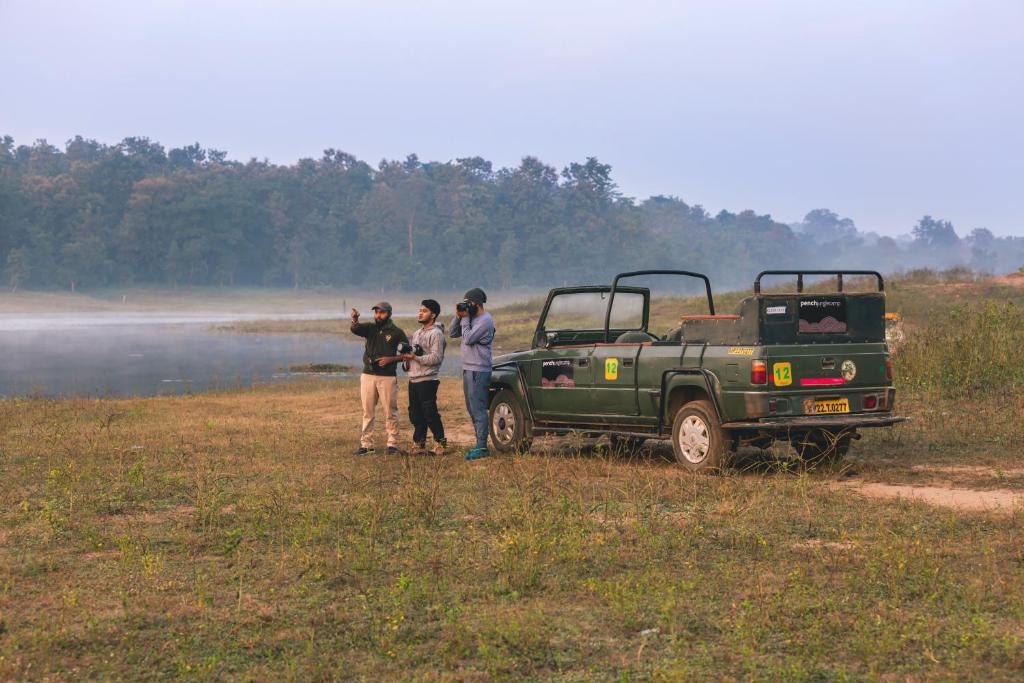
For photography enthusiasts, Pench National Park offers a canvas filled with wildlife opportunities. The park's literary connections, drawing inspiration from "The Jungle Book," add a layer of intrigue. Engage with conservation initiatives as you capture the
beauty of tigers and other inhabitants through your lens.
Sariska Tiger Reserve

Conveniently located near major cities, Sariska Tiger Reserve is an accessible yet enchanting destination. The historical Sariska Palace adds a touch of grandeur to your wildlife adventure. Witness the success stories of rehabilitation as the reserve continues
to thrive as a haven for the majestic Bengal tiger.
Panna National Park
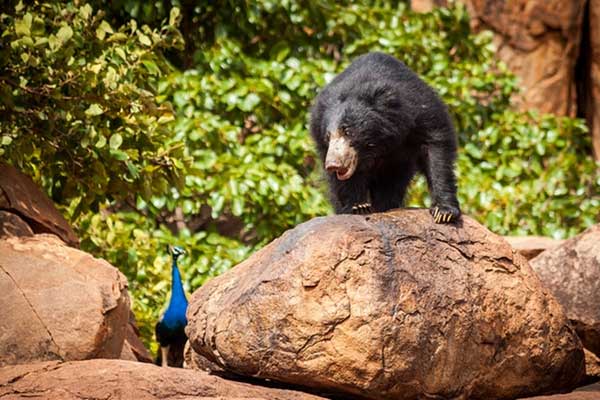
In the heart of India, Panna National Park stands as a testament to rewilding efforts. The Ken River and waterfalls create a picturesque backdrop for your safari adventures. Immerse yourself in birdwatching opportunities and witness the rejuvenation of a landscape
through dedicated conservation initiatives.
Hemis National Park
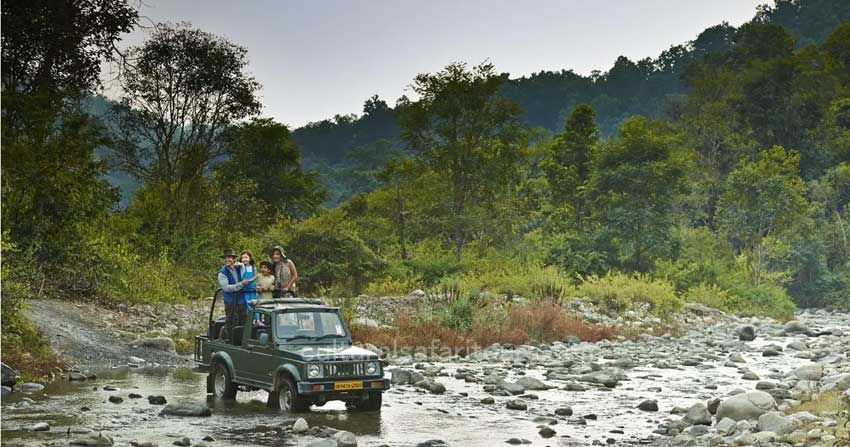
Venturing into the Himalayas, Hemis National Park offers a unique ecosystem for tiger enthusiasts. Snow leopards and tigers share the high-altitude terrain, creating a mesmerizing landscape. Dive into the cultural experiences of Ladakh while marveling at the
adaptability of these magnificent creatures.
Nameri National Park
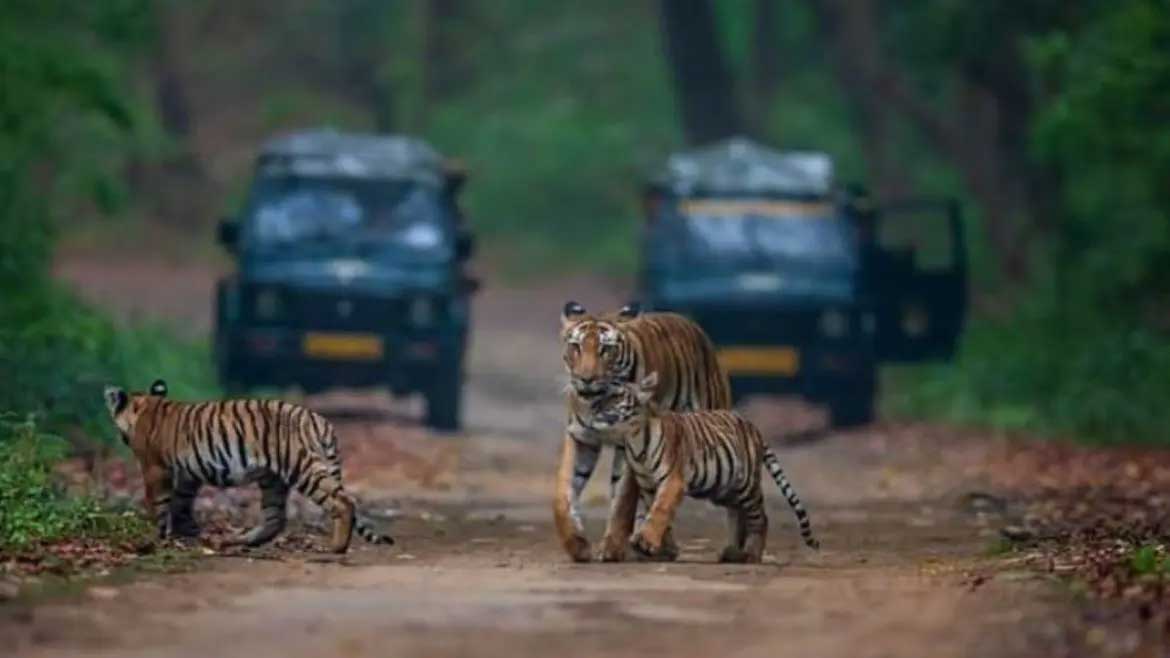
Our journey concludes in the northeastern biodiversity hotspot of Nameri National Park. The Jia Bhoroli River adds an adventurous touch to your safari, showcasing the eco-friendly tourism initiatives in the region. Explore the unique flora and fauna, marking
the end of an enriching tiger safari journey.
Conclusion
In the vast tapestry of India's wildlife sanctuaries and national parks, the best destination for tiger safaris is subjective, each offering a unique blend of experiences. Whether you prefer the historical charm of Ranthambore or the offbeat allure of Tadoba,
each destination contributes to the conservation of these magnificent creatures. As you plan your tiger safari, remember the importance of responsible tourism in preserving these ecosystems for generations to come.
FAQs
-
Is it guaranteed to spot a tiger during a safari?
-
While sightings are common, they depend on various factors, including the time of day, season, and the tiger's behavior.
-
Are there age restrictions for tiger safaris?
-
Most national parks have age restrictions to ensure the safety of visitors. Check with the specific park for their guidelines.
-
What is the best time of year for tiger safaris in India?
-
The ideal time is usually during the dry season, from October to April, when visibility is better.
-
How can I contribute to tiger conservation during my safari?
-
Many parks have initiatives for visitors to contribute to conservation efforts. Check with park authorities or local NGOs for options.
-
Are there accommodations within or near the national parks?
-
Yes, most national parks offer accommodations ranging from budget to luxury options. It's advisable to book in advance, especially during peak seasons.
|
Posted by
Sudhir Sharma
on
October 14, 2024

Sanjay Dubri National Park, nestled in the heart
of Madhya Pradesh, India, is a hidden gem for wildlife enthusiasts and nature lovers. Spanning over 1,500 square kilometers, this national park is rich in biodiversity and offers an unforgettable safari experience. Here’s everything you need to know to make
the most of your visit.

Why Visit Sanjay Dubri National Park?
-
Biodiversity: The park is home to a diverse range of flora and fauna. From majestic tigers and leopards to spotted deer and various species of birds, wildlife sightings are plentiful.
-
Unique Ecosystem: The landscape is characterized by dense forests, open grasslands, and seasonal rivers, creating a unique ecosystem that supports a wide variety of wildlife.
-
Adventure Activities: Beyond safaris, visitors can enjoy trekking, bird watching, and nature photography, making it a perfect destination for adventure seekers.
Planning Your Safari
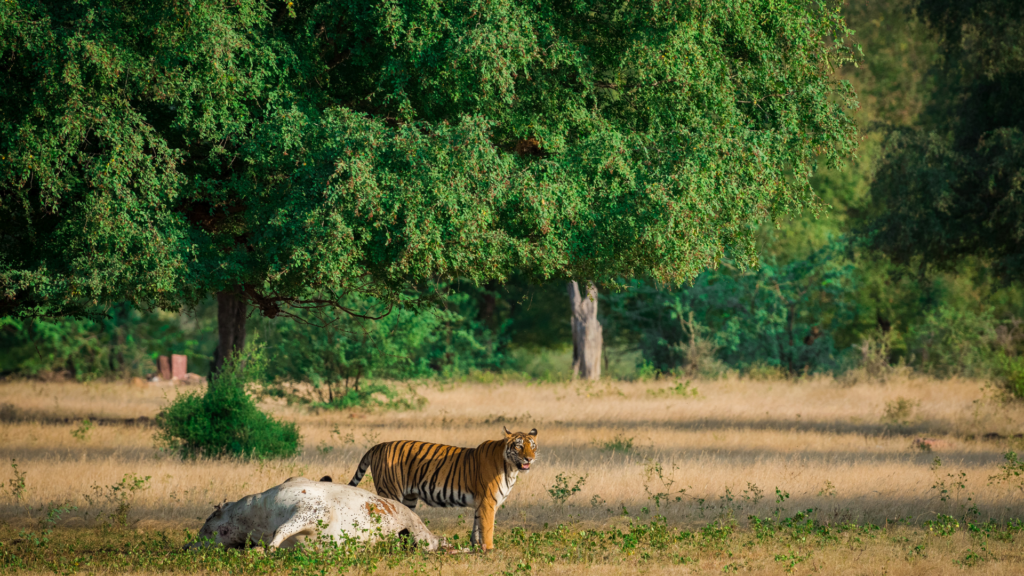
Best Time to Visit:
The ideal time for a safari in Sanjay Dubri National Park is between October and June. The weather during these months is pleasant, and wildlife sightings are more frequent as animals venture out in search of water and food.
Safari Options:
- Jeep Safaris: Explore the park in open-top vehicles, providing an unobstructed view of the wildlife and landscape.
- Guided Tours: Consider hiring a local guide who can offer insights into the park’s ecology and wildlife behavior.
What to Bring:
- Binoculars: Perfect for bird watching and spotting distant wildlife.
- Camera: Capture the beauty of the park, but remember to respect wildlife by not using flash photography.
- Comfortable Clothing: Dress in layers, wear sturdy shoes, and consider neutral colors to blend in with the environment.
Wildlife Highlights
-
Tigers and Leopards: Spotting these elusive big cats is the highlight for many visitors. Sanjay Dubri is part of a larger tiger conservation program, enhancing your chances of a sighting.
-
Bird Species: With over 250 bird species, including migratory birds, the park is a paradise for birdwatchers.
-
Flora: The park’s vegetation ranges from deciduous forests to grasslands, home to medicinal plants and unique tree species.
Accommodation Options
-
Jungle Lodges: For a more immersive experience, consider staying in eco-friendly lodges or tent accommodations within or near the park.
-
Budget Hotels: Various options are available in nearby towns for those looking for more affordable stays.
Conservation Efforts
Sanjay Dubri National Park is not just a wildlife haven; it’s also a crucial area for conservation. Efforts are underway to protect the habitat and the species that inhabit it, ensuring that future generations can enjoy its natural beauty.
Conclusion
A safari in Sanjay Dubri National Park is more than just a trip; it’s an adventure into the heart of nature. Whether you’re a wildlife enthusiast or simply looking to escape the hustle and bustle of city life, this national park offers an enriching experience.
Plan your visit today and immerse yourself in the natural wonders of Madhya Pradesh
|
Posted by
Sudhir Sharma
on
October 14, 2024

Rajaji National Park, located at the foothills of
the Himalayas in Uttarakhand, is a hidden gem for nature and wildlife lovers. Spanning over 820 square kilometers, the park is known for its rich biodiversity and stunning landscapes. If you're planning a safari or a visit to Rajaji National Park, here are
some of the best things you should definitely experience to make the most of your trip.
1. Jeep Safari: Exploring the Wilderness

The main attraction at Rajaji National Park is the jeep safari, which takes you deep into the park's wilderness. The safari offers the opportunity to spot a variety of wildlife, including elephants, leopards, tigers, and the park’s famous bird species. The
park is divided into multiple zones, and each zone offers a unique landscape, from dense forests to open grasslands, enhancing the overall experience. Make sure to keep your camera ready, as the park is also home to over 315 species of birds!
Best Time for Safari: Early morning or late afternoon, when the animals are most active.
2. Birdwatching: A Paradise for Bird Lovers
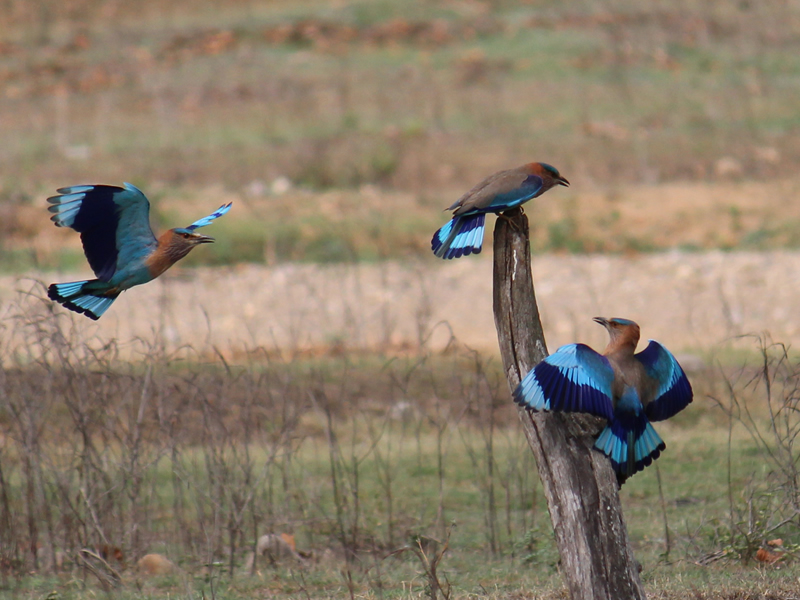
Rajaji National Park is a haven for birdwatchers. The park is home to a wide range of bird species, both resident and migratory. From the magnificent crested serpent eagle to the vibrant kingfishers and woodpeckers, birdwatching in Rajaji is a rewarding
experience. Bring a pair of binoculars, and spend some time near water bodies or in the forests, where birds are often spotted.
Best Spots for Birdwatching: Chilla and Motichur ranges, near water bodies.
3. Elephant Spotting: Witness the Majestic Giants

Rajaji is famous for its large population of Asian elephants. Spotting these gentle giants in their natural habitat is a thrilling experience. You’re likely to encounter elephants during the jeep safari, especially near water sources. Watching them bathe
or travel in herds is a sight to behold.
Pro Tip: The Chilla range is particularly known for frequent elephant sightings.
4. Trekking and Nature Walks: Explore on Foot
If you're someone who enjoys walking through nature, then a trek or nature walk in Rajaji National Park is a must. While certain parts of the park are restricted for foot traffic, there are guided treks available in designated areas, offering a chance to
see the flora and fauna up close. The treks are usually through dense forests and along scenic riversides, providing an immersive experience in nature.
Best Trail: The trek from Chilla to Gohri is a popular route for nature lovers.
5. Visit to Ganga Bhogpur and Chandi Devi Temple
Rajaji National Park is also close to several religious and cultural spots. After your safari, you can visit the nearby
Chandi Devi Temple, which is located on Neel Parvat in Haridwar and offers breathtaking views of the surrounding landscape. The temple is a significant pilgrimage site and can be reached by a short trek or a cable car ride.
Ganga Bhogpur is another scenic spot where you can relax by the Ganga River and enjoy the peaceful atmosphere after an adventurous safari.
6. Camping: Experience the Wilderness at Night
For those seeking a more immersive wildlife experience, camping in Rajaji National Park is a fantastic option. Several eco-friendly campsites are located on the fringes of the park, where you can enjoy the serene surroundings, starlit skies, and the sounds
of the jungle at night. Camping is ideal for families, couples, or even solo travelers looking for a quiet retreat in nature.
Where to Camp: Look for campsites in the Motichur or Chilla range.
7. Wildlife Photography: Capture Nature’s Beauty
If you're a photography enthusiast, Rajaji National Park offers ample opportunities to capture stunning shots of wildlife and landscapes. Whether it's a close-up of a leopard, a herd of elephants crossing a river, or the vibrant colors of the park's birdlife,
the park provides photographers with plenty of inspiration. Don't forget to bring a zoom lens for those distant wildlife shots!
Best Time for Photography: Early morning for soft lighting and animal activity.
8. Rafting in the Ganges: Adventure Beyond the Safari
Rajaji National Park is not just about safaris and wildlife; you can also add a bit of adventure to your trip with river rafting on the Ganges. Haridwar and Rishikesh, both located near the park, offer some of the best rafting experiences in India. After
a day of wildlife spotting, take on the rapids of the Ganga for an adrenaline-pumping experience.
Best Season for Rafting: September to June.
9. Spotting Leopards and Tigers: The Big Cats of Rajaji
Though Rajaji is more famous for its elephants, it's also home to elusive leopards and, occasionally, Bengal tigers. While spotting tigers can be a bit rare, you might get lucky with leopards, especially during evening safaris. They tend to be shy, so patience
is key when tracking them.
Best Time for Big Cat Spotting: Early mornings and late afternoons.
10. Riverbank Picnics and Relaxation
After a safari, there’s nothing better than a relaxing picnic along the banks of the Ganges or a quiet spot near a forest stream. Several areas in Rajaji offer picturesque locations where you can sit back, enjoy a meal, and soak in the natural beauty. The
peaceful surroundings and sounds of the jungle make for a perfect picnic spot.
Best Picnic Spots: Chilla range near the Ganges River.
Booking through Cultural Safari Tours
For a hassle-free experience, consider booking with Cultural Safari Tours. With expert guidance from Sudhir Sharma, you’ll ensure an unforgettable adventure. You can book your safari today at Cultural Safari Tours or contact them at info@culturalsafaritours.com. Call
+91 7014717217 or +91 9414030306 for more information.
Conclusion
Rajaji National Park is more than just a safari destination. It offers a holistic experience of wildlife, adventure, and culture, making it a perfect getaway for nature lovers. Whether you want to embark on a thrilling jeep safari, enjoy birdwatching, or
simply relax by the river, Rajaji has something for everyone. So, the next time you're in Uttarakhand, make sure to add this national park to your itinerary and explore its offbeat attractions
|
Posted by
Sudhir Sharma
on
October 14, 2024


Jim Corbett National Park, nestled in the foothills of the Himalayas, is one of India's oldest and most famous wildlife sanctuaries. While most visitors flock here for the iconic tiger safari, there’s so much more to discover beyond the well-trodden trails.
This article dives into the top five offbeat experiences you can enjoy in Corbett, ensuring your visit is a memorable one.
Let’s take a look at these hidden treasures and why they should be part of your
Jim Corbett Safari booking plan.
1. Walking Safari in the Buffer Zones

If the roar of a jeep engine ruins the peace of the jungle for you, how about exploring the wilderness on foot? Walking safaris in the buffer zones of Corbett are a unique way to experience the park. These safaris allow you to connect deeply with the environment,
as every rustling leaf or distant call of an animal will take on new significance.
Guided by experienced naturalists, these walking safaris take you through less-traveled paths where you can observe the subtler aspects of wildlife—from animal tracks to rare plant species. Think of it as the difference between skimming a book and truly
diving into the chapters. You won't just see the park, you'll feel it.
2. Birdwatching by the Kosi River

Corbett is a paradise for birdwatchers, boasting over 600 species of birds. For those who are interested in avian life, a morning spent along the serene Kosi River can be nothing short of magical. As the mist rises over the river, you’ll spot kingfishers
diving for their breakfast, crested serpent eagles soaring overhead, and colorful bee-eaters flitting among the trees.
This riverside experience is perfect for nature lovers who prefer a quieter, more contemplative interaction with wildlife. Binoculars in hand, you might even catch sight of some migratory birds if you're visiting during the winter months.
3. Camping under the Stars
Have you ever dreamt of falling asleep to the sounds of the jungle? Corbett offers several camping spots where you can experience the raw beauty of nature. Imagine lying beneath a sky filled with stars, the gentle flow of a nearby stream providing the perfect
lullaby. Camping here is as offbeat as it gets, offering a rare chance to escape the clamor of modern life and truly unwind.
Many campsites are located in buffer zones, far away from the crowds, giving you an intimate experience with the wild. Plus, waking up to the sound of birds and watching the sunrise over the forest is nothing short of breathtaking.
4. Village Tours: A Cultural Dive
Jim Corbett National Park isn’t just about wildlife—it’s also surrounded by small villages that offer rich cultural experiences. Visiting a local village provides a glimpse into the daily lives of the Kumaoni people, their customs, and traditions.
Engage with the locals, participate in traditional dances, or enjoy a homemade meal. It’s a chance to immerse yourself in the cultural heritage that coexists with the natural beauty of the park. Plus, you'll be supporting the local community, making your
visit not just an adventure, but also a contribution to sustainable tourism.
5. Riverside Picnics at Sitabani
Sitabani, an offbeat zone within Corbett, offers a perfect spot for a tranquil riverside picnic. Far removed from the more commercial zones, Sitabani is rich in mythology and natural beauty. It is said to be the place where Sita, the wife of Lord Rama, spent
some of her days in exile.
Pack a picnic basket, find a shaded spot along the riverbank, and enjoy the calming sounds of nature. The scenic beauty, combined with the peaceful atmosphere, makes it an ideal spot to relax after a busy morning safari.
Best Time to Visit Corbett National Park
While Corbett is open year-round, the best time to visit depends on what you're looking for. The park is divided into different zones, and some zones are closed during the monsoon (June to September). The most popular months for safari bookings are from
November to February when the weather is cool and the chances of spotting tigers and other wildlife are higher.
If you're more interested in birdwatching, visit during the winter months to catch sight of migratory species.
How to Make Your Jim Corbett Safari Booking
Making a Jim Corbett Safari booking is easy, but it’s important to plan in advance, especially if you’re visiting during peak seasons. You can book your safari online through the official government website or through licensed tour operators.
When booking, you’ll have several options: Jeep safari, Canter safari (in larger vehicles), and elephant rides (in select areas). Choose the option that best suits your travel preferences and group size.
Tips for a Safe and Enjoyable Visit
- Book in Advance: Safaris fill up fast, so book your
Jim Corbett Safari at least a few weeks before your trip.
- Dress Appropriately: Wear neutral-colored clothing to blend in with the surroundings. Comfortable shoes and a hat are also essential.
- Follow the Rules: Always listen to your guide and respect the park's rules to ensure both your safety and the protection of the wildlife.
- Carry Essentials: Don’t forget sunscreen, insect repellent, and a water bottle.
- Respect Wildlife: Keep a safe distance from animals, and avoid making loud noises or sudden movements.
Conclusion
Jim Corbett National Park is an extraordinary place, offering much more than just the traditional safari experience. From walking safaris to cultural tours, there are plenty of offbeat adventures waiting for you. So, the next time you’re making a
Jim Corbett Safari booking, consider adding one or more of these experiences to your itinerary. You won’t regret it!
FAQs
1. Can I explore Jim Corbett on foot?
Yes, walking safaris are available in certain buffer zones of the park. These guided tours offer a closer, quieter look at the wildlife and nature around you.
2. What is the best time for birdwatching in Corbett?
The best time for birdwatching is during the winter months (November to February), when migratory birds flock to the park.
3. Is camping safe in Jim Corbett?
Yes, camping in designated areas is safe and a wonderful way to experience the park. Just ensure you are following all guidelines and staying in approved sites.
4. How do I book a safari in Jim Corbett?
You can make a Jim Corbett Safari booking online through the official park website or via licensed tour operators. Book early to secure your spot!
5. What should I pack for a trip to Jim Corbett?
Pack light, breathable clothing in neutral colors, along with a hat, sunscreen, insect repellent, and comfortable walking shoes. Don’t forget your camera
|
Posted by
Resorts by the baagh
on
October 11, 2024
Nestled in the serene foothills of the Himalayas,
Resorts By The Baagh
is one of the finest luxury resorts in jim
corbett, offering an extraordinary blend of wilderness and comfort. Located near the famed Corbett Tiger Reserve, the resort is an
ideal destination for nature enthusiasts and luxury seekers alike. Guests can indulge in spacious, well-appointed rooms that boast stunning views of the surrounding forests and mountains. The resort offers a range of premium amenities, including a lavish spa,
gourmet dining experiences, and an inviting outdoor pool. Adventure lovers can embark on thrilling jungle safaris, nature walks, and birdwatching tours. Whether you are seeking relaxation or excitement,
Resorts By The Baagh
guarantees a memorable escape into nature with the elegance and comfort of a luxury stay, making it a top choice for visitors to Jim Corbett.
|
Posted by
Trip Taj Mahal
on
October 07, 2024
Trip Taj Mahal is a tour company dedicated to ensuring complete satisfaction for its guests from the moment they arrive until their departure. The company strives to provide an exceptional experience, as they value recommendations from past guests to grow their
business. To make the experience seamless and convenient, they offer a wide range of services all under one roof.
|
Posted by
Mathura Vrindavan Tour
on
October 07, 2024
|
The Mathura Vrindavan tour invites you to explore Mathura, a historic city in Uttar Pradesh and an important Hindu pilgrimage site. Located about 160 kilometers from Delhi, Mathura is renowned as the birthplace of Lord Krishna
and is home to many sites of historical and religious significance. With Mathura Vrindavan Tour Packages, you can experience and enjoy the diverse attractions of the different region.
Our Services
Mathura Vrindavan Tour Package
Vrindavan Tour Package
Mathura Vrindavan Tour Package From Delhi
|
|